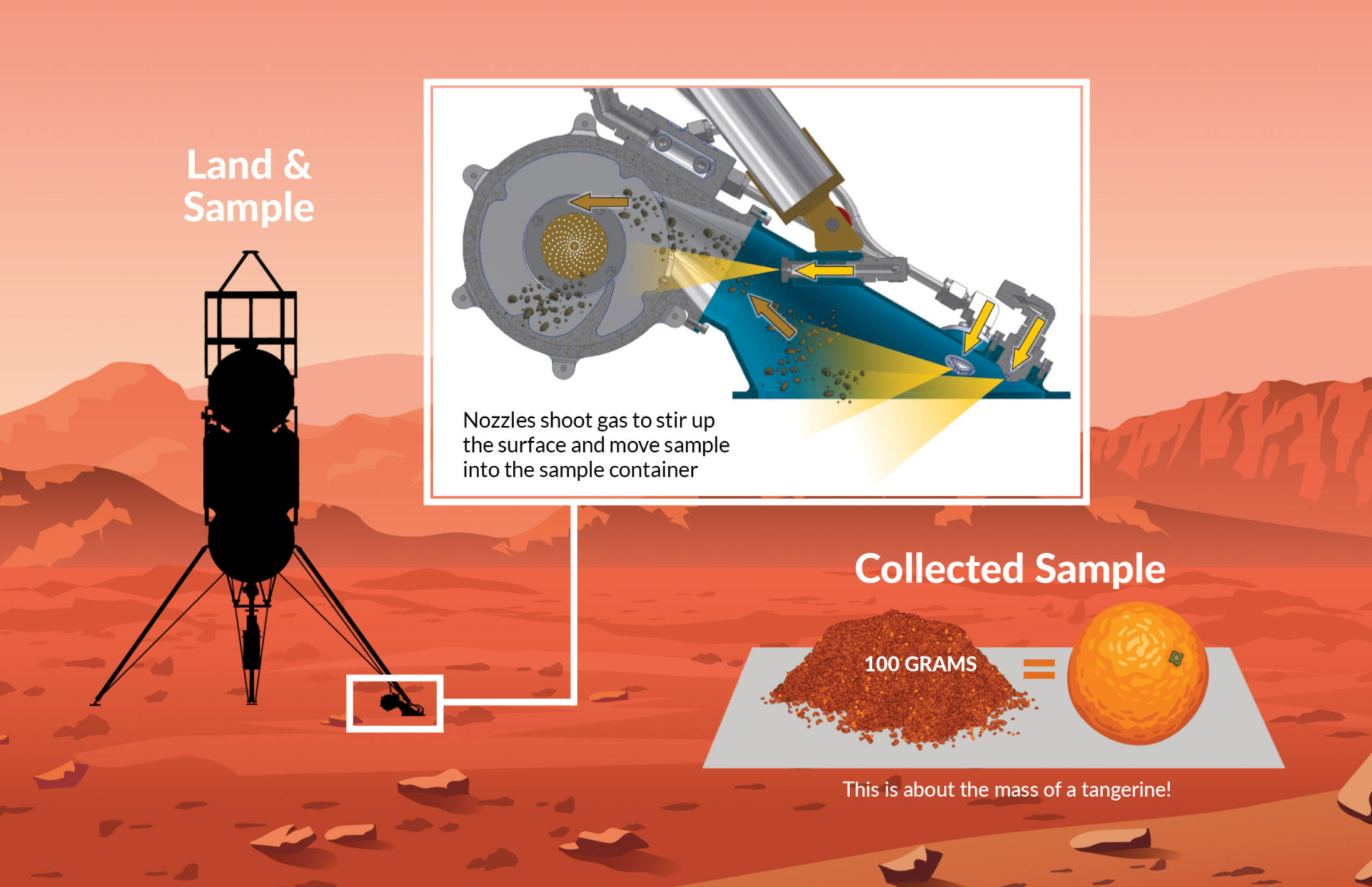Jason Davis • Jul 11, 2019
Planetary Society-funded Technology Picked by NASA for Possible Moon Flight
PlanetVac, a Planetary Society-funded technology that simplifies the process of collecting samples from other worlds, may fly to the Moon.
NASA last week picked PlanetVac and 11 other science and technology payloads to join its Commercial Lunar Payload Services (CLPS) program, which is sending a series of robotic spacecraft to the Moon ahead of humans returning there as soon as 2024. In 2021 and 2022, three commercially-built spacecraft are scheduled to land on the Moon, carrying with them instruments like PlanetVac to study the lunar surface and demonstrate new technologies. NASA will make the final payload selections at a later date.
PlanetVac
PlanetVac is a low-cost, Planetary Society-supported technology that simplifies the process of collecting samples from other worlds.
The Planetary Society funded 2 tests of PlanetVac in 2013 and 2018 in partnership with Pasadena, California-based Honeybee Robotics, which builds the device. In its simplest configuration, PlanetVac replaces a spacecraft's landing leg with a hollow chamber open to the surface on the bottom. After landing, pressurized gas fires into the chamber, stirring soil up into either an onboard science instrument or a sample container for return to Earth.
The goal of PlanetVac is to reduce the cost and complexity of sample collection on planetary missions that would normally require heavy, slow, power-hungry robotic arms.
“PlanetVac is a great example of what The Planetary Society’s science and technology program seeks to do,” said Planetary Society chief scientist Bruce Betts. “Our members and supporters enable us to fund promising projects to develop and test them to a level where they can successfully get selected for flight by agencies like NASA.”

Honeybee has been developing PlanetVac since 2002, with sponsorship from various NASA technology development programs. The Planetary Society crowdfunded a 2013 lab test of PlanetVac, and along with NASA sponsored a 2018 field test using Masten Space Systems' Xodiac rocket, which takes off and lands vertically in California's Mojave Desert.
For the 2018 test, Honeybee replaced one of Xodiac's landing legs with PlanetVac. First, the rocket blasted off, hovered, and landed in a bed of simulated Martian soil. Then, PlanetVac successfully grabbed 300 grams of material—more than 3 times the amount Honeybee had hoped for—before Xodiac lifted off from the soil bed and made a second landing. The test showed PlanetVac could withstand the rigors of an actual rocket flight.
“The number of missions requiring a sample is on the rise, while there is pressure to reduce cost, mass, and volume,” said Kris Zacny, the PlanetVac principal investigator for Honeybee Robotics. “A PlanetVac sample can be delivered to an instrument or sample return container anywhere on a lander in a matter of seconds, and the low cost of the technology will allow instruments that require a sample to be flown on future CLPS missions.”
PlanetVac Testing on Xodiac Rocket In 2018, Planetary Society members and supporters helped fund a test of the PlanetVac sample collection technology aboard a rocket called Xodiac. Xodiac, built by Masten Space Systems, takes off and lands vertically in California's Mojave Desert, allowing hardware developers to simulate the stresses of a rocket launch and landing. PlanetVac was attached to the rocket’s leg and successfully collected 332 grams of simulated Martian soil.
PlanetVac can be used as either a mission's primary sampling device, or function as a low-cost backup for another sample system. The design minimizes moving parts, and can even use gas from the same tanks used to pressurize a spacecraft's fuel tanks.
NASA's CLPS program is using commercially built landers to ferry a mix of NASA-built and non-NASA payloads to the Moon. For the 12 non-NASA payloads, which includes PlanetVac, the agency is using a two-phase selection process. The first phase awards each payload up to $3 million to prepare for a possible Moon flight. NASA will then select one or more individual payloads for the second phase: an actual mission.
Three missions are scheduled thus far. In 2020, a lander built by Orbit Beyond of Edison, New Jersey will carry up to 4 payloads to Mare Imbrium, one of the Moon's dark lava plains visible from Earth. A year later, Houston, Texas-based Intuitive Machines will send as many as 5 payloads to Oceanus Procellarum, the Moon's largest lava plain. Also in 2021, Astrobiotic of Pittsburgh, Pennsylvania will send up to 14 payloads to a large crater on the near side of the Moon named Lacus Mortis.
The Time is Now.
As a Planetary Defender, you’re part of our mission to decrease the risk of Earth being hit by an asteroid or comet.
Donate Today

 Explore Worlds
Explore Worlds Find Life
Find Life Defend Earth
Defend Earth


